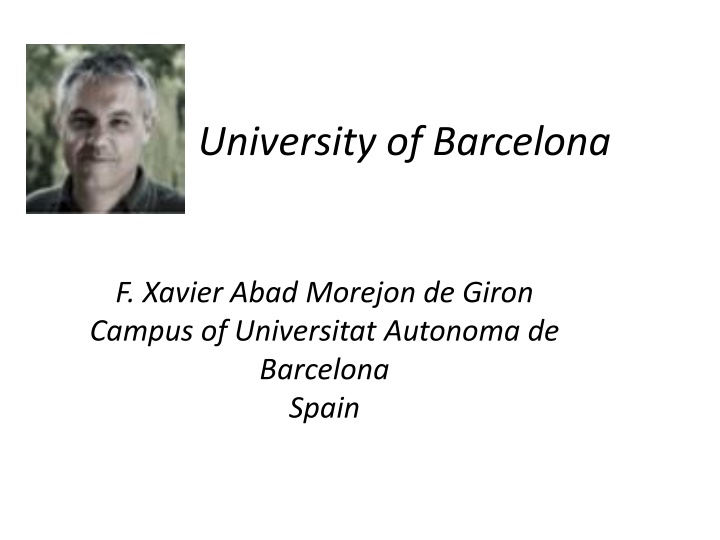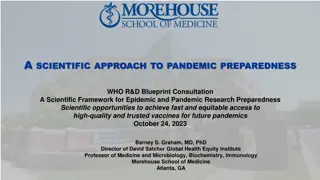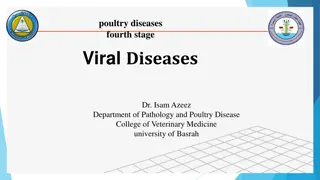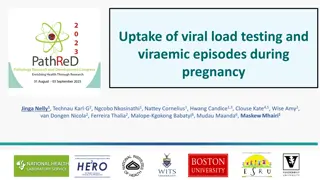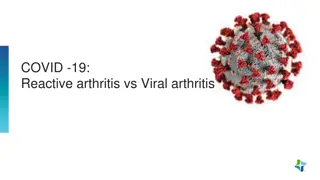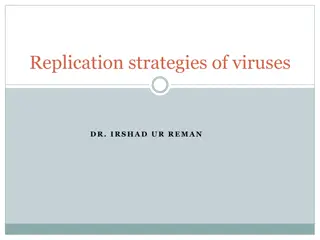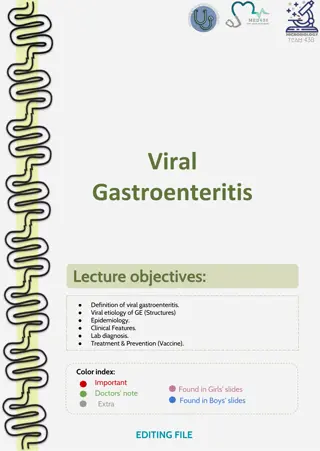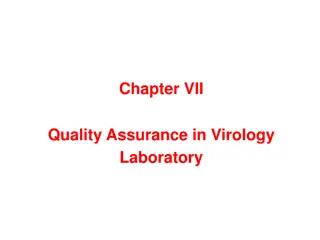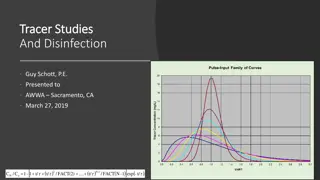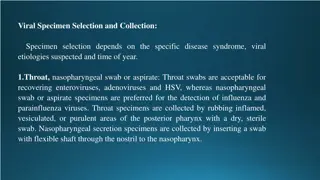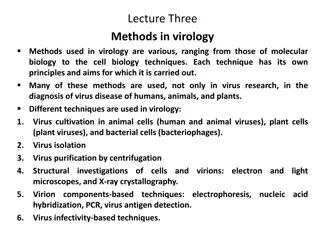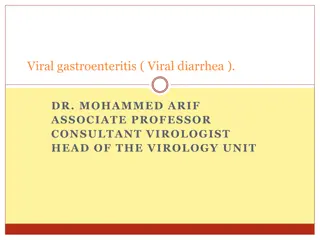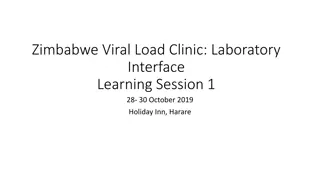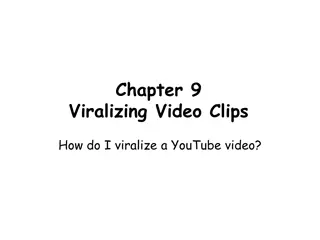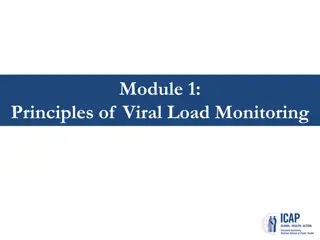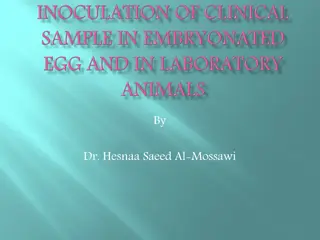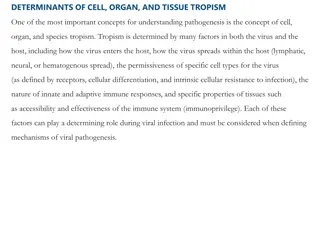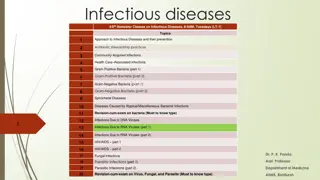Environmental Virology and Viral Inactivation Research
Xavier Abad Morejon de Giron, a PhD in Biological Sciences, specializes in environmental virology, viral inactivation procedures, and biosafety management. His research focuses on the persistence of viruses in various environments, viral safety of products, and biocontainment issues. With over 30 international journal papers and extensive experience managing BSL2/BSL3 laboratories, Xavier is a leading expert in his field.
Download Presentation

Please find below an Image/Link to download the presentation.
The content on the website is provided AS IS for your information and personal use only. It may not be sold, licensed, or shared on other websites without obtaining consent from the author.If you encounter any issues during the download, it is possible that the publisher has removed the file from their server.
You are allowed to download the files provided on this website for personal or commercial use, subject to the condition that they are used lawfully. All files are the property of their respective owners.
The content on the website is provided AS IS for your information and personal use only. It may not be sold, licensed, or shared on other websites without obtaining consent from the author.
E N D
Presentation Transcript
University of Barcelona F. Xavier Abad Morejon de Giron Campus of Universitat Autonoma de Barcelona Spain
BIOGARAPHY His main research interest are persistence of animal and human viruses in the environment, with particular attention to water, fomites and foods, and the inactivation and removal procedures for assuring the viral safety of blood derivatives, cosmetics and foods, and, also, bio containment and biosafety issues in microbiological research laboratories, among others. He has written more than 30 papers in international journals and 6 book chapters. The spreading of his work has been, also, achieved through more than 50 oral or poster communications, mainly, in international congresses or symposia. In the last seven years he has became the person in charge on biosafety management in Centre de Recerca en Sanitat Animal (CReSA), managing 500 m2 BSL3 laboratory areas (in a whole Biocontainment Unit constituted of three floors of 1500 m2 each one), and from 18 months ago, he also took the management of CReSA BSL2 laboratories.
Biosafety, quality and viral inactivation Xavier Abad Morej n de Gir n PhD in Biological Sciences BSL2/BSL3 Laboratory Manager Biosafety Officer
Main fields of interest Environmental virology. Viral inactivation procedures. Validation and standardization. Application to biosafety standard protocols. Application of quality tools in the management of a biosafety facility.
Main fields of interest Environmental virology (in stand by) Persistence of virus on waters Persistence of virus on fomites Environmental microbial activity with virucidal properties. Abad, F.X., Pint , R.M., and Bosch, A. 1994. Survival of enteric viruses on environmental fomites. Appl. Environ. Microbiol. 60;3704-3710. Abad, F.X., Pint , R.M., Gajardo, R., and Bosch, A. 1997. Viruses in mussels: public health implications and depuration. J. Food Protection 60;677-681. Bosch, A., Pint , R.M., Villena, C. and Abad, F.X. 1997. Persistence of human astrovirus in fresh and marine water. Wat. Sci. Technol. 39;243-247. Villena, C., Morsy, W., Abad, F.X., Pint , R.M., and Bosch, A. 2003. Group A rotavirus in sewage samples from Barcelona and Cairo: emergence of unusual genotypes. Appl. Environ. Microbiol. 69;3919-3923. Caballero, S., Abad, F.X., Loisy, F., Le Guyader, F.S., Cohen, J., Pint , R.M., and Bosch, A. 2004.Rotavirus virus-like particles as tracers in environmental studies. Appl. Environ. Microbiol. 70;3904-3909.
Main fields of interest Viral inactivation procedures. On solution, desiccated on fomites (carrier), on foods Assay of viral inactivation procedures on demand (or due to biosafety requirements of CReSA) on a broad range of viruses, either RNA or DNA, enveloped or non- enveloped.
Main fields of interest Viral inactivation procedures. On solution, desiccated on fomites (carrier), on foods Abad, F.X., Pint , R.M., Diez, J.M., and Bosch, A. 1994. Disinfection of human enteric viruses in water by copper and silver in combination with low levels of chlorine. Applied and Environmental Microbiology 60;2377-2383. Abad, F.X., Pint , R.M., and Bosch, A. 1997. Disinfection of human enteric viruses on fomites. FEMS Microbiology Letters 156;107-111. Abad, F.X., Pint , R.M., and Bosch, A. 2000. Virus-inactivation processes: The way to ensure virus safe products. Recent Research Developments in Microbiology 4:643-655. Abad, F.X. y Fraile, L. 2009. Teor a y pr ctica de la limpieza y desinfecci n en granjas porcinas. Suis 58; 14-22 (in Spanish) Abad, X., Maj , N., Rosell, R., and Busquets, N. 2012. Assay of several inactivation steps on West Nile Virus and H7N1 highly pathogenic avian influenza virus suspensions. Biosafety (http://dx.doi.org/10.4172/2167-0331.1000103)
Main fields of interest Viral inactivation procedures. Validation and standardization. Table 2 Agent Viruses H7N7 HPAIV Contact time SVDV H7N1 HPAIV 3 log10 3.5 log10 ND 3 log10 WNV CHIKV AL buffer B3 buffer PBI buffer RAV1 buffer Trizol UV 10 min 25 min 10 min 10 min 10 min 30 min 30 min 30 min 10 min 15 min 10 min 2 log10 NR 5 log10 4 log10 3.5 log10 3.5 log10 1.5 log10 4 log10 1.5 log10 2.5 log10 2 log10 (T) 2 log10 (T) 6 log10 ND 4.5 log10 ND 6 log10 3.5 log10 ND 5 log10 4 log10 ND 6 log10 4 log10 4 log10 4 log10 3 log10 ND ND ND 3.5 log10 4 log10 ND 3 log10 ND ND ND 4 log10 4 log10 4.5 log10 4.5 log10 4 log10 5 log10 5 log10 4 log10 70 C 70 C FTA cards Data expressed, in all cases, as log10 reduction form initial viral titer. NR: No reduction after treatment; ND: Not done yet; (T): Toxicity at high dilutions, the effectiveness of the treatment could be higher that reported; (*): Carrier test performed with viral inocula desiccated on inert surfaces and submitted to H2O2 cycle strictly following manufacturer s instructions.
Main fields of interest Viral inactivation procedures. Application to disinfection biosafety standard protocols Table 1 Viruses H7N7 HPAIV Disinfectant Contact SVDV H7N1 WNV CHIKV time HPAIV 4 log10 4 log10 2 log10 (T) 4 log10 4 log10 4 log10 4 log10 4 log10 NR 2 log10 4 log10 6 log10 4 log10 4 log10 1 log10 1 log10 4 log10 3 log10 5 log10 3 log10 5 log10 4 log10 5 log10 12 hours 4-5 log10 3-4 log10 12 hours 6 log10 4 log10 4% Acetic acid Cloramine T 70% Etanol H2O2 (vapour)(*) 1% Bleach 0.1% Bleach 1% Limoseptic PERAsafe 1% Virkon pH=12.0 pH=12.9 10 min 25 min 10 min 5 hours 10 min 10 min 30 min 10 min 10 min NR 3 log10 4 log10 4 log10 ---- 3 log10 1-2 log10 3 log10 4 log10 3 log10(T) 3 log10 ND ND 2 log10 (T) 4 log10 ---- 3 log10 3 log10 3 log10 ND 3 log10 ND ND 1 log10 ND ND ND ND Data expressed, in all cases, as log10 reduction form initial viral titer. NR: No reduction after treatment; ND: Not done yet; (T): Toxicity at high dilutions, the effectiveness of the treatment could be higher that reported; (*): Carrier test performed with viral inocula desiccated on inert surfaces and submitted to H2O2 cycle strictly following manufacturer s instructions.
Main fields of interest Application of quality tools in the management of a biosafety facility. GLP application on research groups ISO 17025 application in a research facility. How, on what and why? ISO 15793 Biological risk management on biocontainment facilities. Lifelong training of staff in biosafety issues
Main fields of interest Application of quality tools in the management of a biosafety facility. Abad, F.X. 2005. Principis de Bones Pr ctiques de Laboratori (BPLs). Implantaci en un Laboratori de Recerca. Omnis cellula 8;22-27. (in catalan). Abad, F.X., Bosch, A., y Navarro, C. 2005. Implementation of Good Laboratory Practice in a University Research Unit. Quality Assurance Journal. 9; 304-311. Weidmann, M., Hufert, F., Elschner, M., Silman, N., Mirazimi, A., Morej n de Gir n, F., Butaye, P. 2009. Networking for BSL- 3/4 laboratory scientist training. Nature Reviews Microbiology 7;756. Abad, FX. 2013. Biosafety and Quality issues must go hand in hand. Biosafety (doi: 10.4172/2167-0331.1000e142). Abad, X. 2014. CWA 15793: When the Biorisk Management is the Core of a Facility. Biosafety 3: 119. (doi:10.4172/2167- 0331.1000119)
Where I work? CReSA, research facility devoted to Animal Health. Our state-of-the-art building started in operation at 2006. More than 100 people (among technicians, researchers and platform staff). Funding from governmental departments and agencies, from national and European competitive projects and from contracts with private companies.
The whole building 4. BSL2 Laboratories 3. Offices, meeting rooms 2. Air treatment floor 1. BSL3 Animal boxes and laboratories 0. Liquid and solid wastes treatment floor Air treatment Animal Boxes Laboratories Sandwich Box in a Box Liquid /solid wastes treatment BSL3/4 training school, May 2014
HEPA filtration at the entry twice HEPA filtration in the exhaust Video camera Shower Air-tight door Dressing room Dressing room Portable divisors Eslat Water Pool for stool and orin collection Centre de Recerca en Sanitat Animal Chemical inactivation
Where I work Shower Sterilizer HEPA filters Personnel Liquids Negative pressure Air Incinerator Autoclaves Solids
Biosafety, quality and viral inactivation More than 40 international SCI papers. Several chapters in virology books. Contracts with private companies. External expert for private companies in assessment of viral inactivation steps. Expert in GLP and ISO implementation in research environments.
http://t3.gstatic.com/images?q=tbn:ANd9GcR5sAQqluXYsrO9Qv3z-JXOLVxWAsKtRqwcuE641kT-EMO73peASghttp://t3.gstatic.com/images?q=tbn:ANd9GcR5sAQqluXYsrO9Qv3z-JXOLVxWAsKtRqwcuE641kT-EMO73peASg http://t1.gstatic.com/images?q=tbn:ANd9GcQ4z7Uj48fr5TJwIMtM4AYdra7nH1hYWSHcLNaXghw3N2JZoDgTywN6nw CReSA CReSA Building Campus Universitat Autonoma de Barcelona 08193 Bellaterra, BCN, Catalonia http://imgc.artprintimages.com/images/art-print/ken-gillham-mozaic-lizard-sculpture-by-gaudi-guell-park-barcelona-catalonia-spain-europe_i-G-22-2271-V8QZD00Z.jpg http://imgc.allpostersimages.com/images/P-473-488-90/64/6417/ASW9100Z/posters/ben-pipe-casa-mila-unesco-world-heritage-site-barcelona-catalonia-spain-europe.jpg xavier.abad@cresa.uab.cat
OMICS Group Open Access Membership Open Access Membership OMICS International Open Access Membership enables academic and research institutions, funders and corporations to actively encourage open access in scholarly communication and the dissemination of research published by their authors. For more details and benefits, click on the link below: http://omicsonline.org/membership.php
